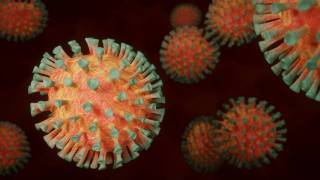Proactive Vaccinology Builds Vaccines Before Pathogens Emerge

Unlike conventional vaccines that include a single antigen to train the immune system to target a specific virus, scientists say they have created a vaccine that protects against various coronaviruses, including potential future variants.
This 'Proactive Vaccinology' may protect people against a diverse range of existing coronaviruses or newly emerging pathogens.
A new study published by the journal Nature Nanotechnology on May 6, 2024, says quartet nanocages are a nanomedicine approach with the potential to confer heterotypic protection against emergent zoonotic pathogens and facilitate proactive pandemic protection.
In animals primed with the SARS-CoV-2 Spike, boosting immunizations with Quartet Nanocages increases the strength and breadth of an otherwise narrow immune response.
Quartet Nanocage, including the Omicron XBB.'.5 'Kr'ken' RBD, induced antibodies binding to a broad range of sarbecoviruses and neutralizing activity against this variant of concern.
Defending against future pandemics requires vaccine platforms that protect against various related pathogens. Nanoscale patterning can address this issue.
In a press release, Professor Mark Howarth, senior author of the report at the University Cambridge's Department of Pharmacology, said, "We don't have to wait for new coronaviruses to emerge."
"We know enough about coronaviruses and their different immune responses to build protective vaccines .... quartets of linked receptor-binding domains (RBDs) from a panel of SARS-like betacoronaviruses are coupled with a computationally designed nanocage through SpyTag/SpyCatcher links."
These Quartet Nanocages, which possess a branched morphology, induce a high level of neutralizing antibodies against several different coronaviruses, including viruses not represented in the vaccine.
Equivalent antibody responses are raised to RBDs near the nanocage or at the tips of the nanoparticle's branches.
These scientists wrote that the underlying technology they have developed has the potential to be used in vaccine development to protect against many other health challenges.
The work involved a collaboration between scientists at the University of Cambridge, the University of Oxford, and Caltech. It improves on previous work by the Oxford and Caltech groups to develop a novel all-in-one vaccine against coronavirus threats.
The vaccine developed by Oxford and Caltech should enter Phase 1 clinical trials in early 2025, but its complex nature makes it challenging to manufacture, which could limit large-scale production.
The research was funded by the Biotechnology and Biological Sciences Research Council.
Our Trust Standards: Medical Advisory Committee
























